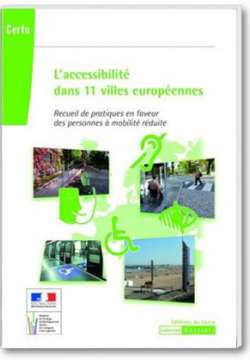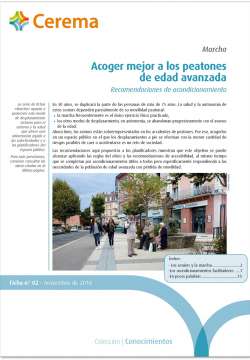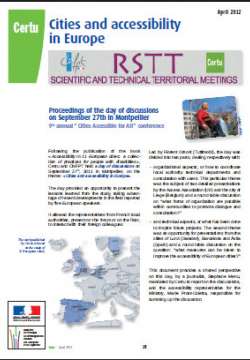
Acessibility in 11 european cities / Accessibilité dans 11 villes européennes
Bilingual book
The aim is to understand, through the various examples, how some European countries address accessibility, to identify the challenges and how they are taken into consideration, and to reflect upon how practices implemented in other cities can help us to innovate and improve accessibility in France.
It is a request often made by local authorities to obtain information and examples concerning accessibility in other countries. To deepen our knowledge of accessibility in Europe and find out where France stands in this field, in relation to neighbouring countries, we conducted a field study. Within the context of a study performed in 2006, five countries were initially identified as being particularly interesting in terms of their approaches to accessibility: Sweden, the Netherlands, Belgium, the United Kingdom and Spain.
Visiting and meeting with experts in two or three cities in each of these countries enabled us to discover and identify their innovative approaches and solutions. This document, therefore, is not an exhaustive comparison of practices in accessibility across Europe. It is not a list of best practices, nor does it present typical or usual practices in European cities; it is a structured overview of our research on good practices conducted between 2007 and 2008. The aim is to understand, through the various examples, how some European countries address accessibility, to identify the challenges and how they are taken into consideration, and to reflect upon how practices implemented in other cities can help us to innovate and improve accessibility in France. How are the challenges in this field measured? How can practices implemented in other cities help us to innovate and improve accessibility in France?
It is organised into three parts, which correspond to three key mechanisms (regulatory, organisational and technical) for improving accessibility in the living environment.







